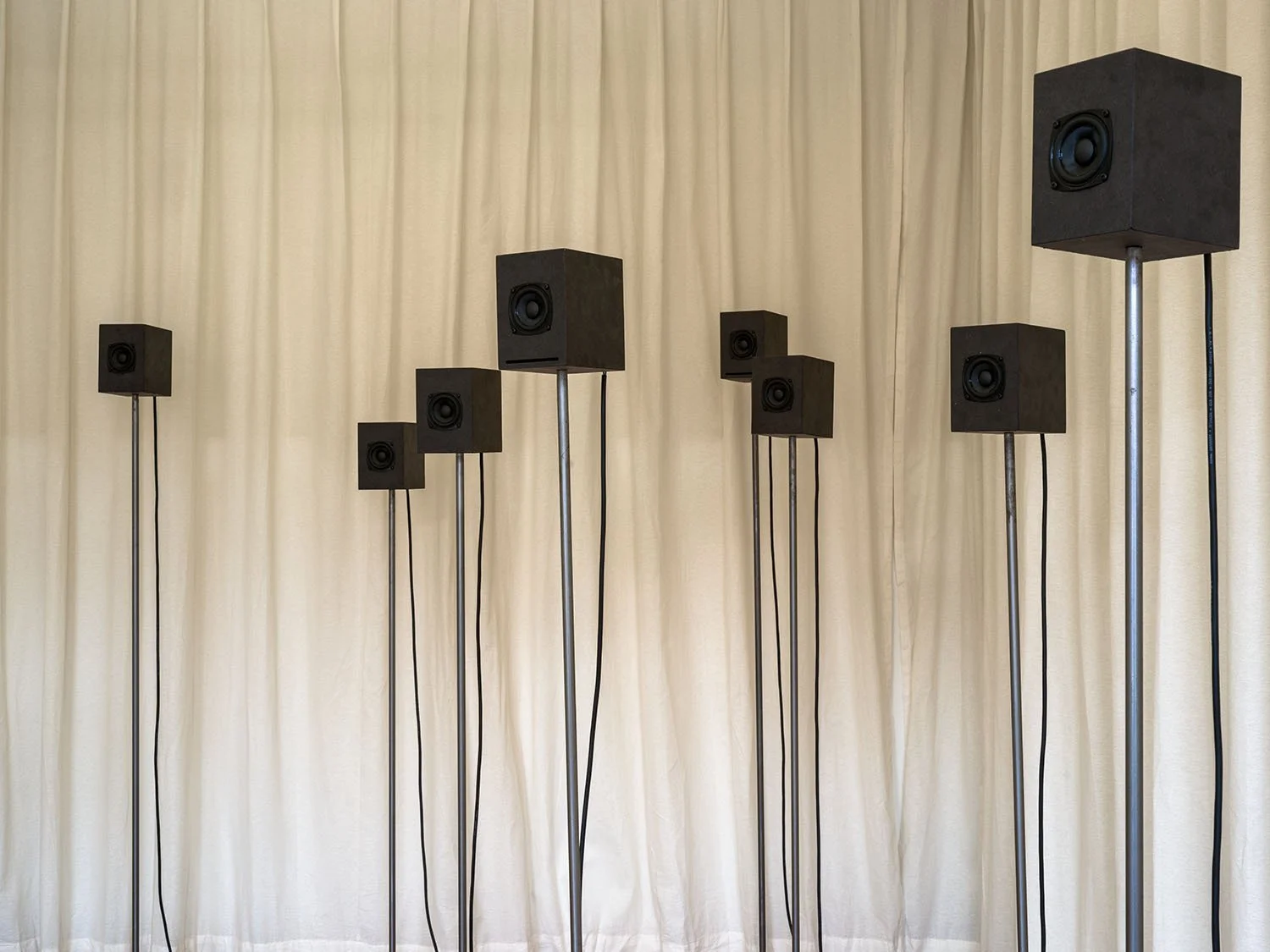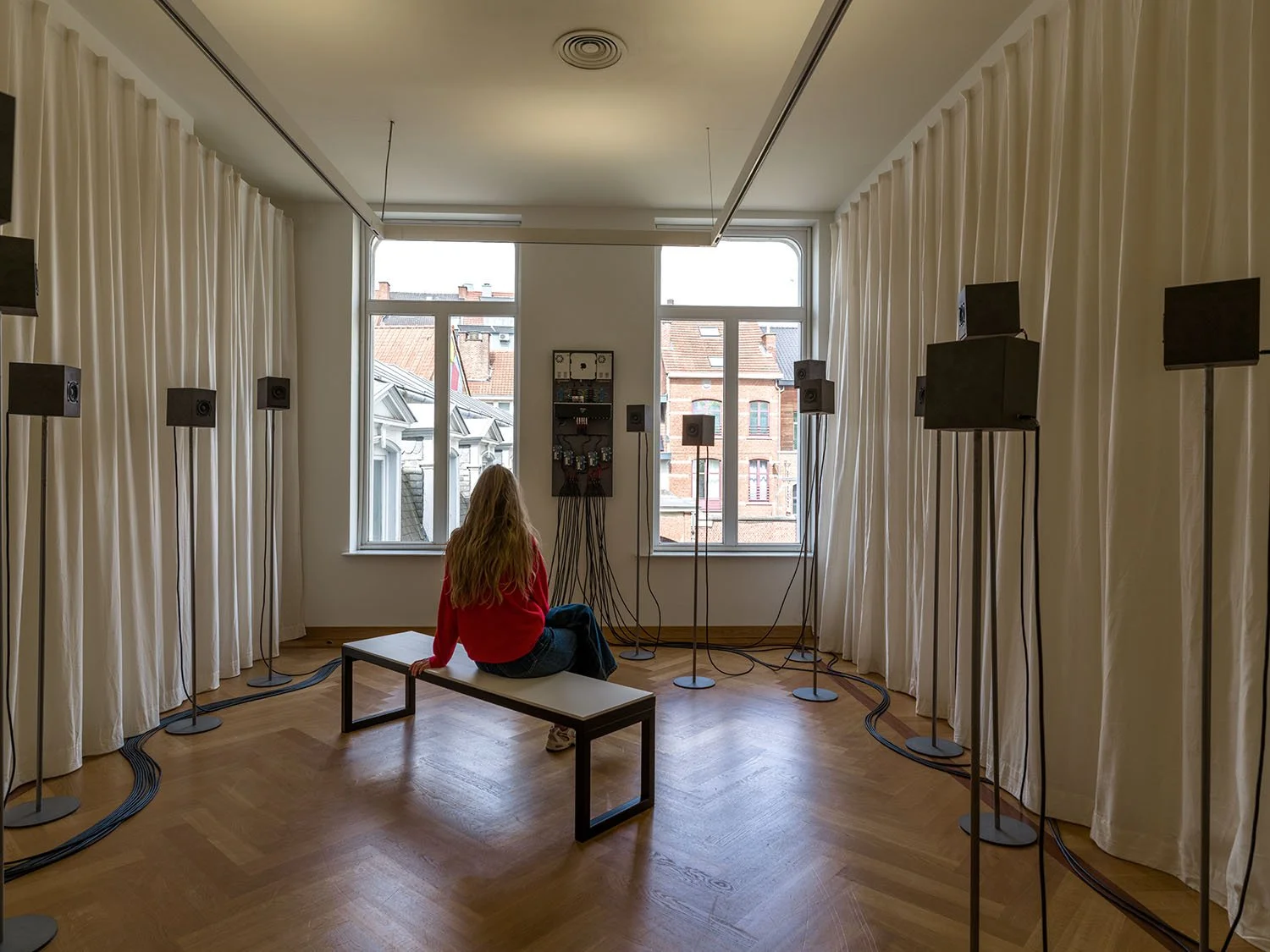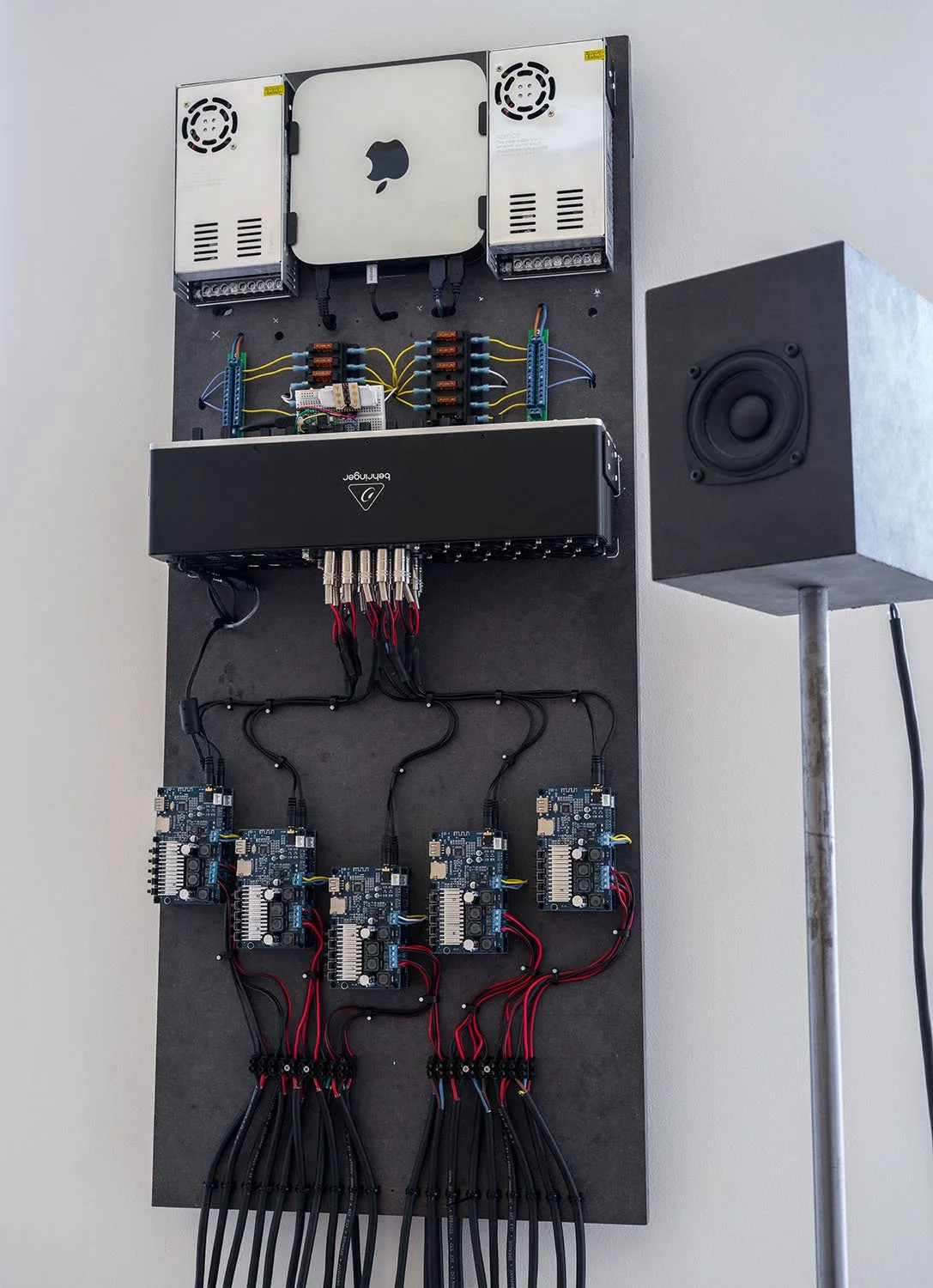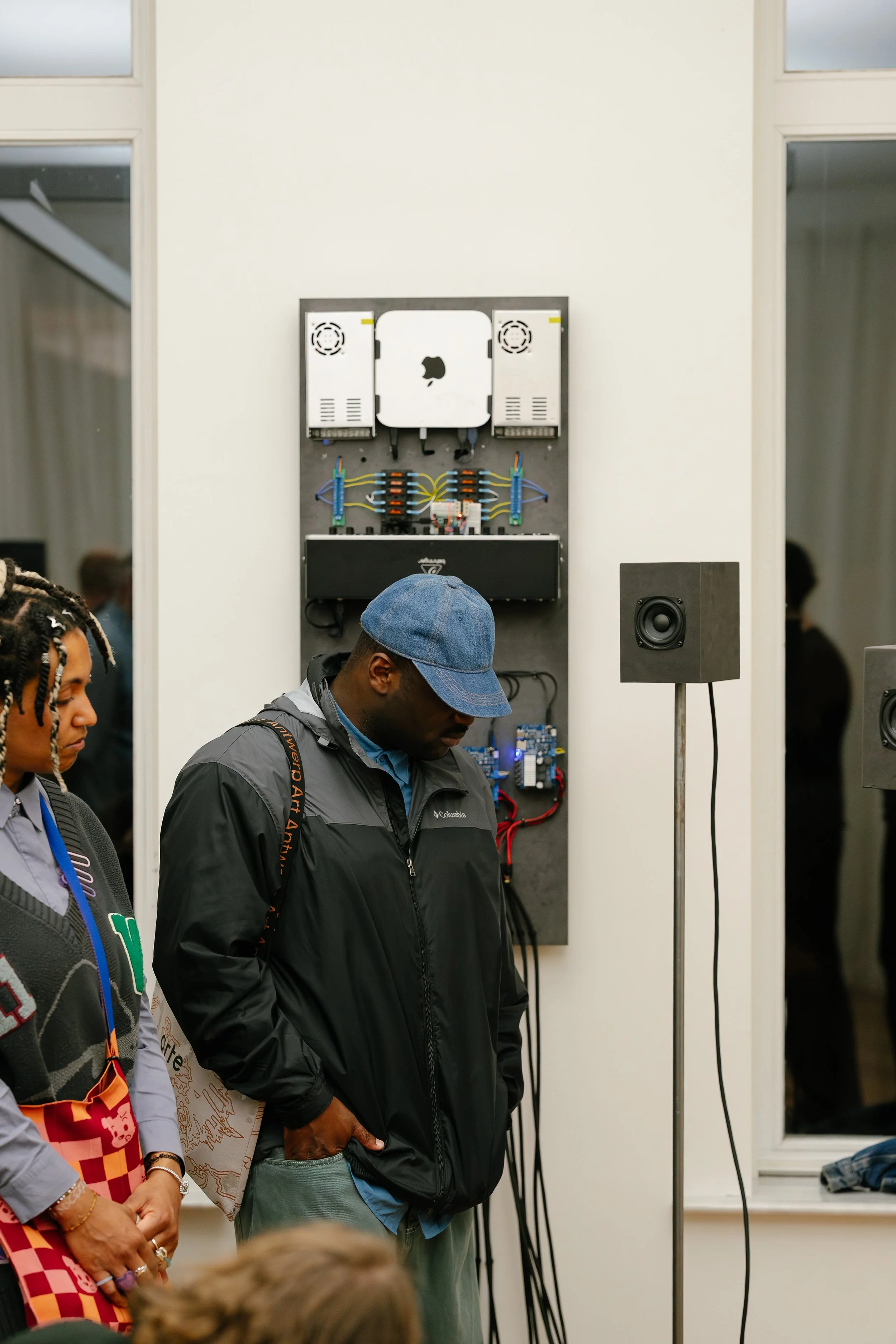THE CHOIR OF DISSONANCE:
THE CREATION OF THE SEA
The work originates from a deeply personal yet collaborative process, one that has shifted and evolved through different contexts.It began as something else, somewhere else. A performance, fleeting and urgent, held within a Night Shift. There, voices met in the dark, touched for a moment, then receded. But how do you hold something that was never meant to be held?
This is an installation that listens as much as it speaks. When the space is empty, the voices whisper. And when a body enters, the voices rise, gathering weight, gaining shape, from different altitudes unfolding into song. At its core, the piece explores the duality of presence and absence, the way sound materializes and dissipates, much like memory. The artist, whose practice spans image, sound, performance, and spatial intervention, is interested in the interplay between the seen and the unseen, the heard and the unheard.
The challenge—and the opportunity—was to transform something once ephemeral into a durational sonic presence within the institutional frame of the museum. What was once live and immediate has become durational—woven into the architecture, held within the walls of an institution that, by design, carefully curates sound and silence. The installation embraces the negotiations that took place—noise disrupts, it spills, it carries beyond its intended frame and does not conform easily to the boundaries of exhibition spaces.
But this will make noise? - Yes, it must.
Compromise was in letting the work breathe in a different way, and so the installation learned to listen: a dynamic, responsive system that shifts between modes of audibility. Yet silence is not empty; it holds memory, and echoes of what came before. It allows for listening, for anticipation of what might emerge next. The installation does not impose sound but invites it, shaping a space where silence is not absence but presence in its own right—a charged stillness, a pause where meaning gathers.
When the space is empty, the soundscape is delicate—fragments of a poem originally written in Dutch and later translated into English, French, and Portuguese. Some languages sit differently with some bodies, changing the physicality of one’s voice. The voices blend and dissolve, creating an intimate dialogue with absence. But as visitors enter, the sound transforms and amplifies. The sound expands, fills the space—a choir, an echo, an invitation. This modulation between silence, murmur, and full resonance reflects how bodies activate space, how presence alters perception, how voice moves between the personal and the collective— acknowledging the deep connection between language, identity, and expression.
Some voices chose their mother tongues; others the language they navigate their thoughts with. This multiplicity emphasizes the plurality and the nuances of experience —not just linguistic, but emotional and spatial. Beyond the sonic, the voices that form the installation are more than sound sources; they carry histories, relationships, and shared moments of trust. The process of gathering and recording, these voices resonates with a broader approach of the artist in working through collective structures.
What emerged was a constellation of voices recorded separately and yet, in their layering, forming something deeply communal. Each voice held its own resonance, its own grain, its own intimacy, and yet, together, they’re bridging distances through breath and rhythm. The act of recording became a dialogue in itself—a space of exchange, of generosity, where each voice was not only heard but held.
And who is this work for? This iteration and the previous ones depict that presence is not just a choice and visibility is as much granted as it is taken. By allowing the installation to exist in fluctuating states - whispers, choral, and at times, near silence — it remains porous, responding to those who enter, making room for multiple forms of listening. A space where sound bends to the body, where stillness has its own voice, where absence and presence are in constant exchange. This installation, even though housed within the museum, resists fixity. It asks: What happens when sound does not simply demonstrate but interacts?
And when does listening become an act of witnessing?
— Marie Umuhoza
Exhibited at
With the voices of
Aghogho (Caro Abutoh)
Aïcha Ouattara
Ashley Morgan
Brahim Tall
Emeraude Tshidibi Kabeya
Fahad Seriki
Fred Gata (Frédérick Nizeyimana Gatabazi)
Gabriel Eden
Jonathan Rwaka Rutayisire
Joram Kunde Boumkwo
Junior Akwete
Kamal Tall
Kenny Mala Ngombe
Keziah Morris
Lou Cocody Valetino
Martha Canga Antonio
STACE
Uwase (Anaïs Rutayisire)
Zindzi Tillot Owusu
Music composed by
Lisa Wambacq
Audio Design
David Dubois
Thanks to
M-Leuven
Laure Vanrijckegem
Eric Cyuzuzo
Decoratelier
Ermias
Frederik Van Vaerenbergh
Gillis Van Der Wee
Gouvernement
John Koslovsky
Maakleerplek
Mischa Dols
Nele Keukelier
Sirah Foighel Brutman
Sofia Dati
Vivi Focquet




